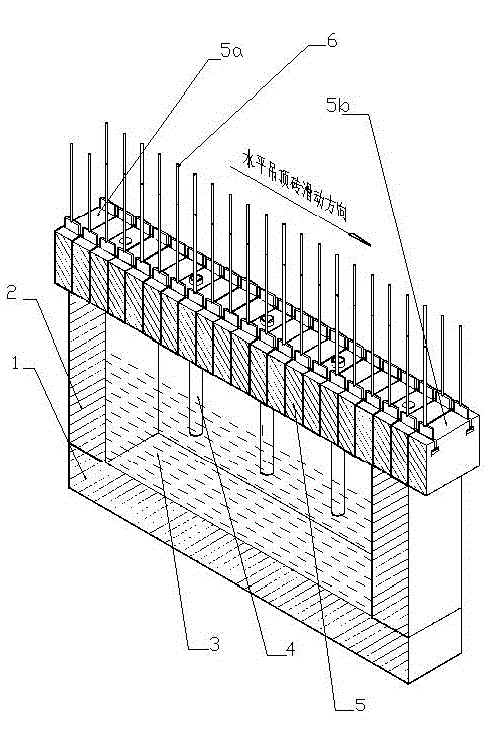Novel method for melting glass liquid through immersion and combustion on glass liquid by jet pipe of combustor
A technology of immersion combustion and glass liquid, applied in glass furnace equipment, glass manufacturing equipment, manufacturing tools, etc., can solve the problems of difficulty in practical application, excessive nozzle erosion, and high gas temperature
- Summary
- Abstract
- Description
- Claims
- Application Information
AI Technical Summary
Problems solved by technology
Method used
Image
Examples
Embodiment Construction
[0015] figure 1 , the burner nozzle (4) penetrates the kiln roof hanging brick (5) and inserts into the molten glass (3) from above the molten glass (3). Through the burner nozzle (4), the gas fuel and the gas oxidant are injected into the molten glass (4) separately or mixed, so that they are burned in the molten glass (4), and the high-temperature gas generated stirs the molten glass (4), and Transfer most of the heat to the molten glass (4) and batch material, so that the glass material can be melted rapidly and homogeneous.
[0016] In order to prevent the kiln roof bricks from being severely eroded and life shortened when the distance between the kiln roof and the glass liquid level approaches, the kiln roof is designed to be a continuously renewable structure. The specific method is: hang the kiln roof bricks (5) through the suspension rod (6) Hang on the track (not shown in the figure) with hanging wheels to form a movable horizontal ceiling of the kiln, so that the ki...
PUM
 Login to View More
Login to View More Abstract
Description
Claims
Application Information
 Login to View More
Login to View More - R&D
- Intellectual Property
- Life Sciences
- Materials
- Tech Scout
- Unparalleled Data Quality
- Higher Quality Content
- 60% Fewer Hallucinations
Browse by: Latest US Patents, China's latest patents, Technical Efficacy Thesaurus, Application Domain, Technology Topic, Popular Technical Reports.
© 2025 PatSnap. All rights reserved.Legal|Privacy policy|Modern Slavery Act Transparency Statement|Sitemap|About US| Contact US: help@patsnap.com

